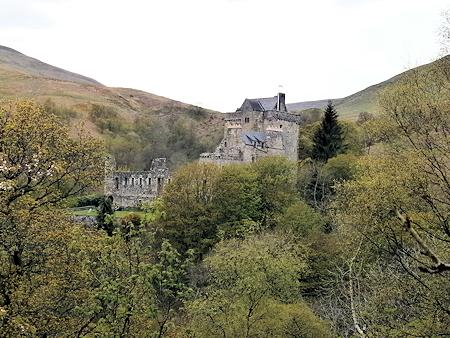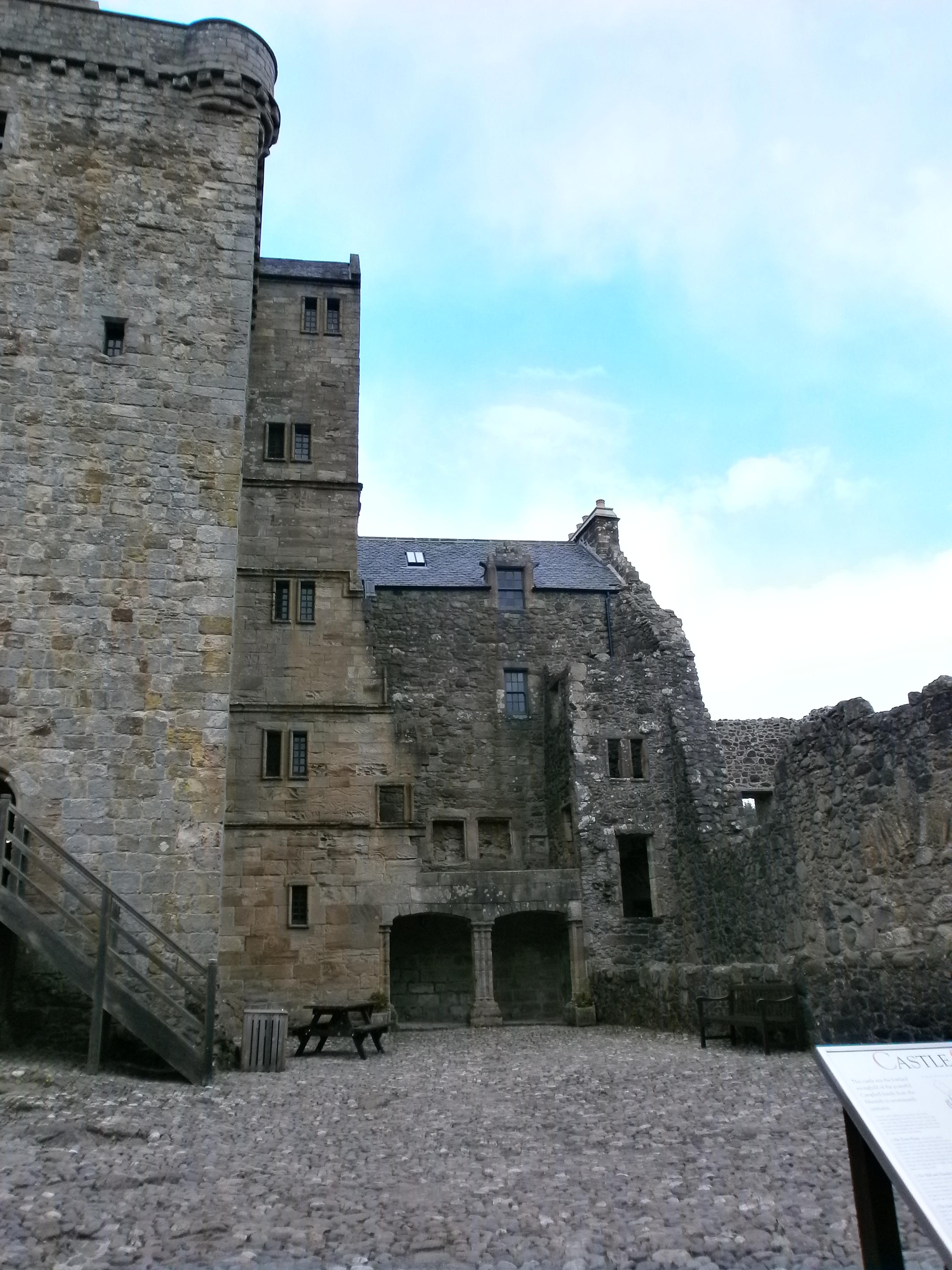
Castle Campbell
Castle Campbell sits in a commanding and strategic location at the top of Dollar Glen overlooking the town of Dollar to the south. It is possible that the grassy hill on which the castle is the remains of an earlier wooden motte and bailey castle. It stands on a narrow ridge with the Ochil Hills to the rear and a precipitous ravine on each side.
Originally known as Castle Gloom it was in the heart of the realm with the royal castles of Stirling and Doune only a few miles to the west and Edinburgh to the south.
In 1465 Castle Gloom came into the possession of Colin Campbell, 1st Earl of Argyll when he married Isobel Stewart, daughter of John Stewart, 2nd Lord Lorne.
Castle Gloom Becomes a Campbell Stronghold
There was a dispute over John Stewart's estates, however and the first documented mention of the castle is in a papal bull of 1466 which chastised Walter Stewart, 3rd Lord Lorne, for destroying 'a tower of the Place of Glowm situated in the territory of Dollar'.
There are still some signs of damage from the attack, notably in the first floor hall. However Colin Campbell moved to Gloom and took up residence. In 1460 he became Master of the Household under James III and in 1488 he petitioned King James IV to change the name to Castle Campbell.
Archibald, the 2nd Earl added the south range and the terraced garden. Like his father, Archibald moved in royal circles and the south range bears a remarkable similarity to the King's Old Building in Stirling Castle.
Archibald's new hall replaced the original great hall in the east range, which was subsequently subdivided to create more accommodation space.
Famous Visitors
Under the 4th Earl the castle had two famous visitors. The first was John Knox, probably in 1556 after his return from exile. He stayed at the castle for a while and preached to a congregation there. A few years later Mary, Queen of Scots, stayed for a few days to attend the wedding of James Stewart to the 5th Earl's sister. The festivities included banquets, dancing and courtly entertainments.
The next substantial change to the castle's buildings was under the direction of the 7th Earl, also Archibald, who had the entire courtyard level rebuilt around 1590. He also added the very unusual two-bay continental-style loggia (open corridor) at ground level.
During the political and religious turmoil in Scotland during the 17th Century, the Campbell earls supported the Protestant cause, against King Charles I. Archibald, 8th Earl Argyll, 1st Marquis of Argyll was a major figure in the Covenanter movement.
In 1645 James Graham, Marquis of Montrose, took his army from Fife to Kilsyth, just outside Glasgow. On the way they attacked Dollar, burning houses and destroying crops and livestock. However the castle wasn't taken and emerged more or less unscathed in the attack.
The castle's demise wasn't long in coming however. In 1650 Oliver Cromwell's army defeated the Scots at the Battle of Dunbar. The Marquis of Argyll switched to Cromwell's side and was one of a number of noblemen to proclaim Cromwell as Lord Protector of Scotland.
Castle Campbell was garrisoned with English troops and that made it a target. In July 1654 the castle was attacked and badly damaged. After the Marquis's execution in 1661 his son, the 9th Earl, abandoned the castle for a more comfortable residence in Stirling. It was briefly garrisoned again during the 1715 Jacobite Rising, but in the main it was left to fall into ruin.
The National Trust Takes Over
In 1805 it was sold to Crawford Tait who owned the neighbouring Harviston estate. In 1948 the castle and glen was entrusted to the care of the National Trust for Scotland. An agreement was made between the National Trust and the then Ministry of Works (now Historic Scotland) whereby the Ministry would look after the castle and the National Trust would take care of the glen.
Today the castle has been stabilised and a new roof was placed on the tower. The tower is open to the public and houses displays on the castle's history and its famous visitors. Visitors can also climb right up to the roof level and see splendid views of Dollar and as far as the Pentland Hills and Grangemouth.
Car parking is available both at the castle and further down the glen. There is a walk along the gorge for the more adventurous. The castle itself has a gift shop, cafe and toilet facilities.
Status: Ruin / Visitor Attraction
Owner: Historic Scotland
Tel: 01259 742 408
Website: www.historic-scotland.gov.uk
Opening Times: April - September Daily 9.30am to 5.30pm / October Daily 9.30am to 4.30pm / November - March Saturday to Wednesday 9.30am to 4.30pm

Looking across Dollar Glen at Castle Campbell
The courtyard, east range and loggia

